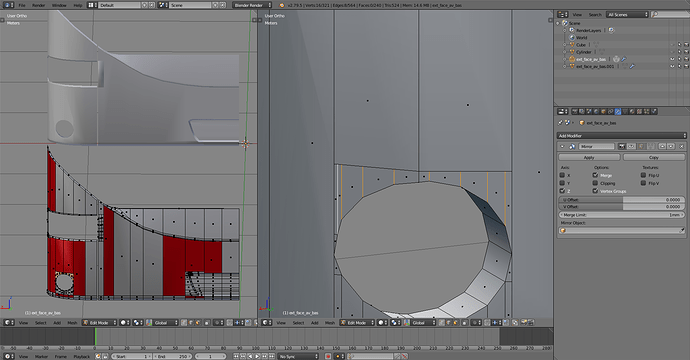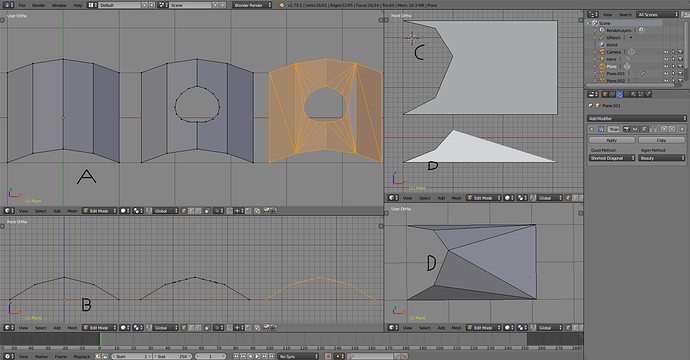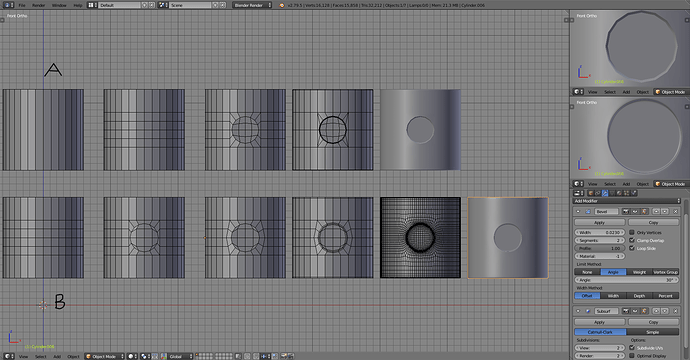Those aren’t quads. You’re creating n-gons around, which are faces with more than 4 sides.
When you make such cut on a curved surface, the resolution of the hole edges is higher than the cut geometry, which creates n-gons. Because it’s a curved surface, those n-gons are concave and/or non-planar.
A. The cut was made and the created n-gons are planar, but concave. The n-gons are triangulated internally, which all are on a flat surface, so you’re not describing a curvature for the hole nor shading it as such
B. As seen from a different angle
C. If you were to make a cut so that the new vertices do follow a curvature, then you’re creating a severely non-planar n-gon and there are folds that don’t have edges
D. which is because it again has to internally triangulate it which creates those folds
A. Add enough geometry that can support the details you put in. This will be hard to work with and control if you want more closely defined details. Smooth shading only affects the shading, and you still need enough geometry for the contours to look smooth instead of being angular/faceted
B. Which is where subdivision surface comes in. You can use much less geometry which subdivision surface refines, so you gain more control, but that also means you have to plan and control the subdivisions with the structure.


